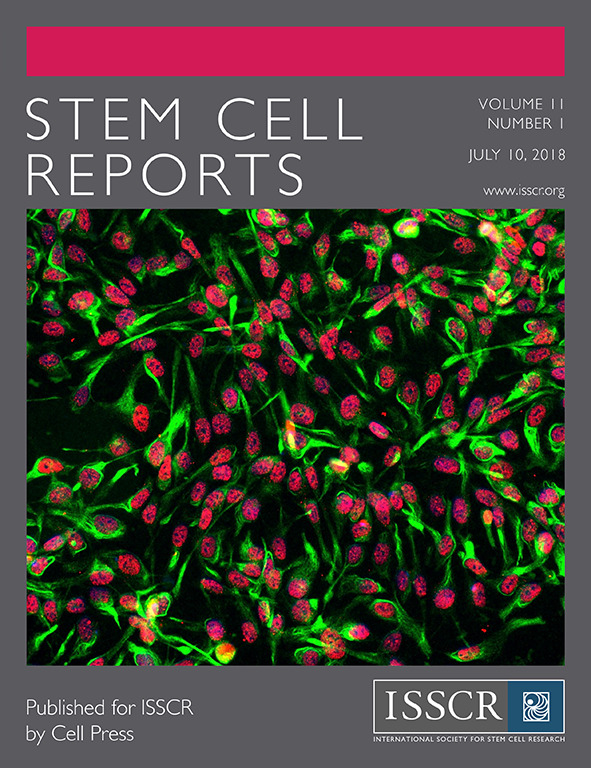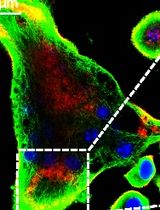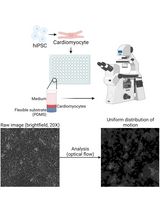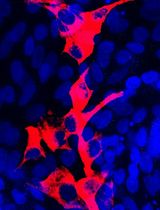- EN - English
- CN - 中文
Cartilage Induction from Mouse Mesenchymal Stem Cells in High-density Micromass Culture
高密度微团培养的小鼠骨髓间充质干细胞诱导分化生成的软骨
发布: 2019年01月05日第9卷第1期 DOI: 10.21769/BioProtoc.3133 浏览次数: 7334
评审: Giusy TornilloSurabhi SonamJaira Ferreira de Vasconcellos
Abstract
Mesenchymal stem cells have the ability to differentiate into multiple lineages, including adipocytes, osteoblasts and chondrocytes. Mesenchymal stem cells can be induced to differentiate into chondrocytes in extracellular matrices, such as alginate or collagen gel. Mesenchymal stem cells in a cell pellet or micromass culture can be also induced to form cartilages in a defined medium containing chondrogenic cytokines, such as transforming growth factor-β (TGF-β). Here, we describe a simple method to form cartilage by seeding mesenchymal cells derived from limb-bud cells at high cell density. First, we dissected the limb buds from embryonic mice (embryonic day 12.5) and digested them with enzymes (dispase and collagenase). After filtration using a cell strainer, we seeded the cells at high density. Unlike other methods, the method described here is simple and does not require the use of specialized equipment, expensive materials or complex reagents.
Keywords: Chondrocytes (软骨细胞)Background
Mesenchymal cells differentiate into skeletal elements by forming a cartilaginous nodule, which induces bone formation through endochondral ossification in the vertebral column and long bones (Karsenty et al., 2009). Endochondral ossification is required for proper skeletal development during embryogenesis and has been recently demonstrated to be involved in the bone regeneration and joint diseases postnatally (Kawaguchi, 2008). Mesenchymal cells could be used as a regenerative therapy for these diseases. To study the mechanisms regulating endochondral skeletal development, we have examined high-density micromass cultures of embryonic limb-bud mesenchymal cells (Gay and Kosher, 1984; Iezaki et al., 2018). The in vitro chondrogenic cell culture system is useful for the analysis cartilage nodule formation that results from the condensation of mesenchymal cells and differentiation into chondrocytes.
Several methods have been developed to generate cartilage from mesenchymal cells. Mesenchymal cells in cell pellet or micromass culture can be induced to form cartilage in chondrogenic medium containing cytokines such as transforming growth factor-β (TGF-β) (Sekiya et al., 2002). Mesenchymal cells have also been induced to differentiate into chondrocytes in extracellular matrices such as alginate or collagen gel (Xu et al., 2008). Although these methods are effective to analyze chondrogenesis, they can be time consuming and expensive because they require complex reagents and equipment.
For this reason, we have developed a culture method to form cartilage from mesenchymal cells using a very simple method. We induced the differentiation of cells harvested from mouse limb buds (embryonic day 12.5) in high-density micromass culture and induced the cells to form cartilage nodules in growth medium without chondrogenic cytokines. In comparison to other methods, the method described here is simple and does not require specialized equipment, expensive materials or complex reagents. This method could be really useful for reducing the cost and complexity of the procedure.
Materials and Reagents
- Pipette tips (RIKAKEN, catalog numbers: RST 481SCV, RST 4820YV, RST 4810BV)
- 1.5 ml tube (WATSON, catalog number: 131-815C)
- Cell strainer (Corning, catalog number: 352235)
- 4-well cell culture plate (Thermo Fisher Scientific, catalog number: 176740)
- Syringe-driven filter unit (Millipore, catalog number: SLGV033RS)
- Filter paper (ADVANTEC, catalog number: 00011090)
- E12.5 Embryo mice (C57BL/6J)
- D-MEM/Ham's F-12 (Wako, catalog number: 048-29785)
- Dispase (Gibco, catalog number: 17105-041)
- Collagenase (Wako, catalog number: 034-22363)
- FBS (Sigma, NRE-172012)
- L(+)-Ascorbic Acid (Wako, catalog number: 016-04805)
- Paraformaldehyde (PFA) (Wako, catalog number: 162-16065)
- Sodium Hydroxide (Wako, catalog number: 198-13765)
- Acetic acid (Wako, catalog number: 017-00251)
- 10x PBS(-) (Wako, catalog number: 314-90185)
- Alcian Blue 8GX powder (Sigma, catalog number: A5268-25G)
- Enzyme solution (see Recipes)
- L(+)-Ascorbic acid stock solution (see Recipes)
- Chondrogenic medium (see Recipes)
- 8% PFA stock solution (see Recipes)
- 1% acetic acid solution (see Recipes)
- Alcian blue solution (see Recipes)
Equipment
- Pipettes (Glison, catalog numbers: F144802, F123615, F123602)
- Microtube rotator (AS ONE, catalog number: MTR-103)
- CO2 incubator (SANYO, model: MCO-17AIC)
- High speed refrigerated microcentrifuge (TOMY, model: MX-307)
- Automated cell counter (Bio-Rad, model: TC-20)
- Microscope (Kyence, model: BZ-9000)
Software
- BZ-2 application (Keyence)
- ImageJ (NIH, https://imagej.nih.gov/ij/)
Procedure
文章信息
版权信息
© 2019 The Authors; exclusive licensee Bio-protocol LLC.
如何引用
Iezaki, T., Fukasawa, K., Yamada, T., Hiraiwa, M., Kaneda, K. and Hinoi, E. (2019). Cartilage Induction from Mouse Mesenchymal Stem Cells in High-density Micromass Culture. Bio-protocol 9(1): e3133. DOI: 10.21769/BioProtoc.3133.
分类
发育生物学 > 细胞信号传导 > 命运决定
细胞生物学 > 细胞分离和培养 > 细胞分化
您对这篇实验方法有问题吗?
在此处发布您的问题,我们将邀请本文作者来回答。同时,我们会将您的问题发布到Bio-protocol Exchange,以便寻求社区成员的帮助。
Share
Bluesky
X
Copy link












